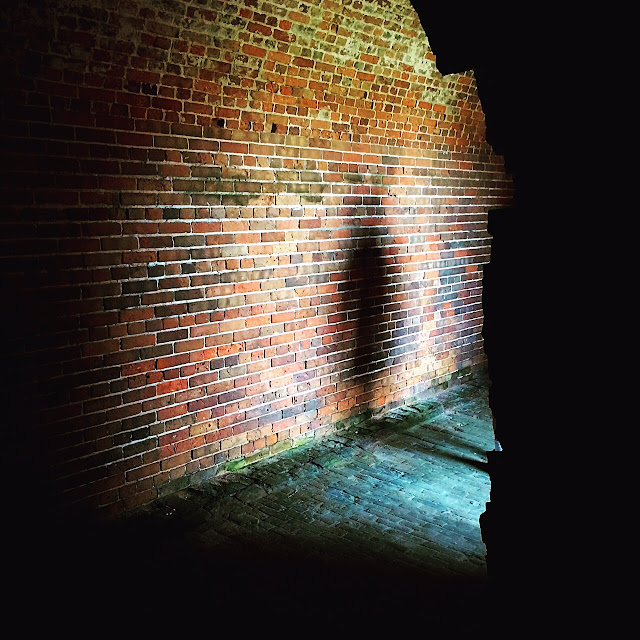 |
| The main entrance to Fort Morgan notes the year the fortress was named. |
 |
Original plans for Fort Morgan.
(Library of Congress) |
"Damn the torpedoes, full speed ahead!" Admiral David Farragut famously said after one vessel in his 18-ship fleet was sent to the bottom of Mobile Bay as the Union navy steamed past Fort Morgan on Aug. 5, 1864. Four days later, Union troops that included the 2nd Connecticut Light Artillery landed on the east side of Fort Morgan to begin a siege that ended with the Rebels' surrender on Aug. 23, 1864. The Confederates' commander was killed and the fort's barracks were so badly damaged that they were later torn down. (The wreck of the U.S.S. Tecumseh, the Union vessel sunk by a mine during Farragut's attack, lies in Mobile Bay today.)
U.S. troops occupied Fort Morgan during the Spanish-American War, World War I and World War II before it was deactivated in 1946 and turned over to the state of Alabama. I shot these images during an early-morning visit to Fort Morgan, 22 miles from Gulf Shores, Ala., on the Gulf Coast.
 |
| A living historian walks through the main entrance to Fort Morgan. |
 |
| A visitor's shadow eerily appears on a wall of a casemate. |
 |
A tourist slips into the powder magazine, which held more than 60,000 pounds of powder during the
Union navy's siege in August 1864. |
 |
| Impressive brickwork in an inner area of the fort. |
 |
| If necessary, fort defenders could fire through the embrasures. |
 |
A view through an embrasure shows the "murder ditch," which could be vigorously defended
with cannon fire if an enemy penetrated the fort's defenses. |
 |
| The Confederate national flag flies near Fort Morgan's museum, but for how long? |









I sincerely hope it continues to fly and serves to open conversations about a heart wrenching period in our history. Artifacts can be used to promote understanding- if they’re simply erased, there won’t even be an attempt to try.
ReplyDelete